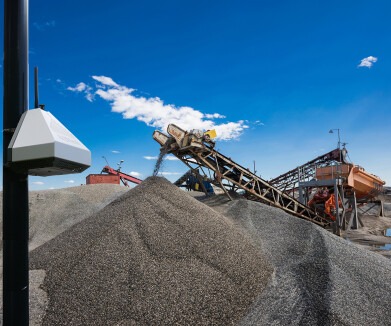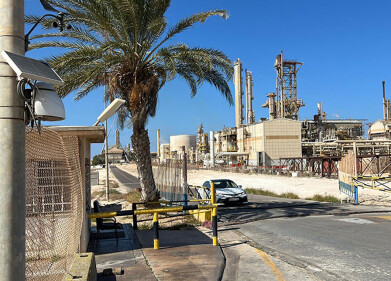Air Quality Monitoring
From curiosity to compliance: air quality around mining operations
Jul 09 2024
Mining sites are generally dusty places – but how dusty? Is the health of workers at risk, could local communities be affected or operations compromised? As well as high levels of particulate matter, mining facilities may also generate pollution from other activities, such as engines producing oxides of sulphur or nitrogen. To add potential complication, there may be other sources of the same pollutants in the same area, as well as vulnerable communities.
A reliable air quality monitoring system can provide a clear and confidential picture of air pollutant levels at a mining site. Continuous pollutant readings from across and around a project offer real insights to inform operations.
A practical tool that’s up to the job
AQMesh pods can be installed – with no training – in ten minutes, as they come with simple post fittings and have autonomous communication, using the local phone network to transmit data to a cloud server. Whilst direct power supply is an option, the smart solar pack offers reliable 12-month power in most locations, and is equally easy to set up.
Mines are notoriously tough sites, with high dust levels, use of heavy machinery and dust suppression spraying. AQMesh has been designed and proven to withstand not only these challenges but the worst that nature can present. Long-term monitoring around mining facilities from Saudi Arabia and Australia to Sweden and Canada has demonstrated robust performance in hot and dry to freezing conditions.
Meaningful information to support operations
A real-time view of pollution, which can be related to operational activities and events, can provide unique insights into how your operations are - or are not - impacting local air quality. Identifying peaks of pollutants by exact time of day and location brings some hard facts into any question of air quality levels around the site or over the boundary towards neighbouring communities.
As well as creating a valuable historical record of measured pollution levels, near real-time readings can be used to trigger exceedance alerts, evaluate dust mitigation measures or provide data for compliance to local environmental standards. Measurement accuracy is underlined by indicative MCERTS certification for PM2.5 and PM10.
Scope to go further
Whilst even a single pod can answer many questions about air pollution around a mining facility, it is possible to set up a larger network of pods around a site. AQMesh can also be used alongside other measurement technologies, including passive sampling, bag samples or reference / equivalence method technology, to provide cross-checking and traceability. Baseline levels can be compared to operational air pollution profiles, and the AQMesh ultrasonic wind sensor can be used for complex site analysis, and even as the basis for modelling.
AQMesh has been developed to meet the challenges of long-term use in mining applications and users include the biggest names in global mining. Mining applications include copper, lithium, phosphate, nickel, cobalt, nitrates with locations from Australia to Zambia. AQMesh offers a robust, autonomous network that can be a ‘sentry’ for years, with minimal maintenance/cost.
Click here for more information.
Digital Edition
AET 28.4 Oct/Nov 2024
November 2024
Gas Detection - Go from lagging to leading: why investment in gas detection makes sense Air Monitoring - Swirl and vortex meters will aid green hydrogen production - Beyond the Stack: Emi...
View all digital editions
Events
Jan 12 2025 Abu Dhabi, UAE
Jan 14 2025 Abu Dhabi, UAE
Jan 20 2025 San Diego, CA, USA
Carrefour des Gestions Locales de L'eau
Jan 22 2025 Rennes, France
Safety, Health & Wellbeing LIVE
Jan 22 2025 Manchester, UK



















